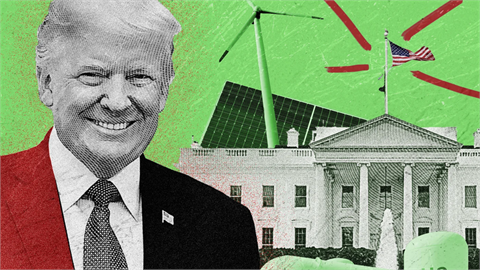While climate policy is defined by market intervening legislation, it is to be kept at a minimum, and as technology develops, costs fall, and best practices are refined, interventions become less necessary and obtuse. It is not necessarily disingenuous that on the energy side of the equation the European Commission (EC) is staunchly free market, working to unleash competitive efficiencies that increase overall social welfare.
Consequently, the EC’s position on retail price regulation (along with capacity markets) calling o the Member States to limit and eventually abolish them altogether should not come as a surprise. The core argument is that regulated prices tend to be artificially low, reducing the scope of market competition and consumer switching, and dissuading private investment. Furthermore, the EC believes that elimination will open consumer participation in the retail segment and increase flexibility in the form of storage and demand-side measures.
Several countries oppose this unbridled market philosophy, especially in Central and Eastern Europe (CEE) where, in the name of energy security, governments traditionally are more active in shaping energy markets and treat the provision of affordable electricity for citizens as a state social service (and re-election strategy). End consumer prices tend to be politicised and – as demonstrated by Hungary and Slovakia – interventions are becoming more overt and pervasive.
The European Price Breakdown
Unlike wholesale electricity markets, which have been near unanimously liberalised and integrated onto dynamic trading platforms across Europe, retail markets remain protected and segmented in several European countries and parts of the United States. Yet, the practice is more deeply hardwired in CEE where end-user prices are treated as more of a social policy tool with political stakes.
The EC proposal would extend a five-year window for vulnerable consumers while the bulk of households would be immediately exposed to market forces. It would establish dynamic pricing through smart metering systems, aggregators (groups of consumers) and local energy communities/associations within a geographically confined network to buy and sell electricity.
These measures are meant to maximize demand-side flexibility for system balancing by allowing the direct participation of consumers in the market that can capitalize on savings opportunities from price volatility.
Price volatility is still precisely what many governments want to protect their citizens from. Price regulation caps prices to shield defined segments of consumers from sharp spikes, which similarly to peak load prices that are being eroded by renewable energy sources on wholesale markets, are essential for utilities to recoup investment costs.
The inability to pass higher prices onto customers in times of high demand or low supply discourages prospective investors, which have to be incentivised by nonmarket methods – subsidies – in the form of capacity payments to ensure sufficient future capacity.
Politicians certainly don’t prioritize twenty or thirty-year time horizons like energy investors must, so policies and regulations that manipulate markets for short-term benefits can come at a long-term cost to ratepayers and/or taxpayers.
Several factors determine electricity prices at the national level, the supply-demand balance, national energy mix, import diversification, network and environmental costs, levels of excise and taxation, etc. The retail price is typically broken into four broad categories that account for all associated cost inputs: energy-only, network fees, energy taxes (i.e. renewable subsidies) and VAT. The balance of these categories can vary substantially from country to country, but on average less than half of end-user prices are market driven with national fiscal and regulatory settings determining the rest.
‘Soft’ regulation allows suppliers to adjust their tariffs according to an established price setting methodology or price index, which has scope to pass through market-based energy-only prices. Conversely, ‘hard’ regulation is effectively an extension of state social policy whereby the relevant ministry sets an agreeable end user price.
The problem across Europe with non-transparent regulated fees and taxes comprising more than half of end user price is that falling wholesale energy prices, which have reached record lows in recent years, are not passed onto households. In fact, for many Europeans, bills are increasing.
CEE continuing hard regulation for now
Retail markets are especially sensitive in CEE where interference from Brussels will continue to be met with resistance. With lower incomes and higher energy poverty rates, cheap and stable prices have become a cornerstone of election campaigns. In what is a rare sign of unity in recent times, the V4 issued a joint response to the Winter Package in February 2017, expressing broad concerns over its implications for the right of national self-determination over the domestic energy sector.
This is emblematic of a region where the state remains, directly and indirectly, involved in highly concentrated domestic markets and Brussels’ renewable-based energy transition has yet to be embraced.
In Hungary, Prime Minister Viktor Orban’s Fidesz party has prioritized the retail market and price regulation on its agenda as a key part of his populist strategy. Orban declared that energy utilities should operate as not-for-profit entities before systematically renationalizing them and slashing retail prices by 10% three successive times. With elections in Hungary scheduled for April, energy prices will again move into the spotlight as part of the re-election campaign.
Meanwhile, in late November Slovakia’s Regulatory Office for Network Industries (URSO) chief Lubomir Jahnatek notified news agencies that end-user household electricity prices would rise 2.71% year-on-year in 2018 without much further elaboration.
The announcement was somewhat unexpected given the pretext from just a year before, when higher 2017 tariffs requested by regulated distribution companies (reportedly up to 14%) caused a political uproar leading to the resignation of then URSO chairman Jozef Holjencik and a restructuring of the office that brings its leadership selection under more direct political influence. The chief is now selected by the government rather than the President, and Jahnatek, a former Minister of Economy and Agriculture under two of Prime Minister Robert Fico’s previous governments, was handpicked by him.
Fico has stated repeatedly that stable electricity prices are a cornerstone of his government’s policy. In absolute terms, Slovakian citizens have paid the highest absolute prices for electricity among the Visegrad Group most of this decade, and in terms of purchasing price parity, the amount paid relative to income is among the highest in the EU.
These high prices can be attributed more broadly to Slovakia’s conservative political and regulatory attitude that continues to shape the energy mix. Rather than embracing the integration of increasingly competitive renewable energy sources leadership has pursued a pro-nuclear policy, a technology that essentially cannot compete in today’s energy market without state support, while subsidizing coal plants to protect jobs.
This can be ascribed to all Visegrad countries to varying degrees. Slovak household prices have been tempered by more populist policies that played out in 2017, and although not nearly as interventionist as Orban. Fico is following a similar script. Some of the burden shifts to Slovakia’s industry as a form of cross-subsidisation, which consequently also pays among the highest prices in the region.
Moving ahead with standardisation and compromise
The outlook for a trilateral agreement will be a loose compromise resting somewhere in the middle of the current polarity, not the naked market of pure price signals but redefined and refined regulations of consumer classes subjectively interpreted and gradually adapted. Member States are still finalising the implementation of the 2009 Third Energy Package well beyond the initial 2014 ‘deadline’ and are still able to suspend and manipulate compliance in certain areas.
The EU directive that emerges on price regulation will have to allow Member States scope for interpretation and time for implementation to avoid clashing with the national prerogative enshrined in Article 7 of the Lisbon treaty. In the meantime, the EC will continue to make its case to persuade the Member States with further studies and communications that demonstrate the efficacy of market-based solutions and consumer activism.
https://www.neweurope.eu/article/amid-debate-eu-consumer-price-regulation-visegrad-group-staying-course/


